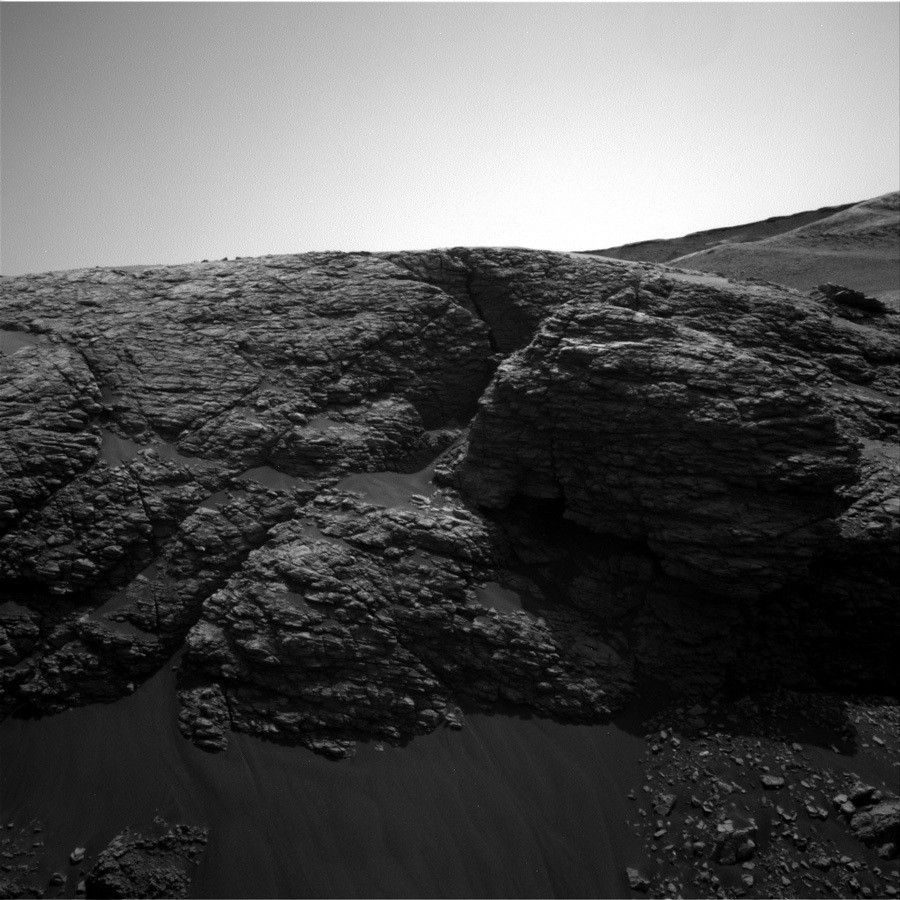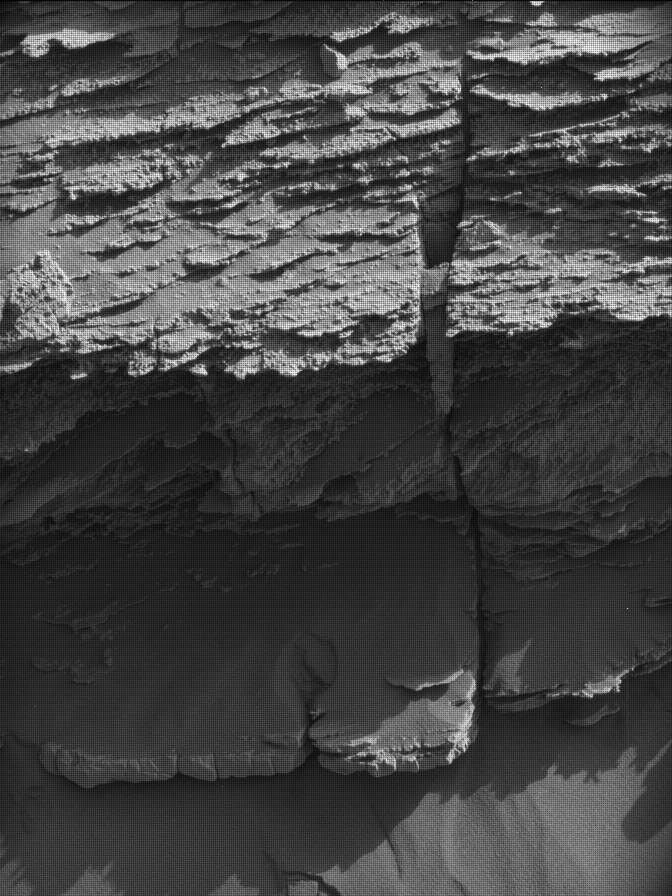The planning team this morning was excited to see the view ahead of Curiosity after a weekend drive away from our parking spot for the last three months. However, we were all a little apprehensive as we awaited the downlink from MRO to confirm that the drive had taken place. Relief; the downlink confirmed that the drive executed as planned, placing Curiosity ~3-4 m from the “Maybole” outcrop. The geologists have been interested in getting closer to this rock exposure for some time, as it represents one of a series of unusual ledges present in this area. Do these ledges represent a slightly different rock type to the more typical low relief terrain? Are they more cemented and harder than surrounding rocks? Might they provide clues as to what is happening as we get closer to the sulfate unit, that we are on route to?
To better observe the textures such as bedding, laminations, any cross laminations, veins or resistant features the team planned a large Mastcam stereo mosaic of Maybole. And to get a head start on what the chemistry of these rocks is, ChemCam will shoot the target “Hollandstoun” on the right front face of the outcrop (centre of image) in an area that we hope to target with our contact science instruments in the next plan.
Much of our discussion during planning revolved around trying to pick the best area on the Maybole outcrop to drive to in order to examine the rocks with our contact science instruments on the end of Curiosity’s robotic arm. We need to balance our science objectives with what can be achieved by the rover with respect to driving close to the rock face, safely unstowing the arm, and being able to place the MAHLI and APXS close to, or on the rock face. Luckily, the area that the team is most interested in from a scientific perspective appears to be reachable by the rover. The planned drive tosol should place us in a prime position to interrogate the Maybole rocks for fine-scale textures with MAHLI, and chemistry with APXS, in the next plan. To give us another hint at the chemistry of the Maybole rocks prior to placing APXS, a post-drive ChemCam AEGIS observation will be acquired. A planned post-drive MARDI image should also give us a sense of what the ground beneath our wheels looks like.
The environmental group was also busy planning observations of the atmosphere. These will include a ChemCam passive sky observation and a Navcam dust devil survey and line of sight observation. Standard REMS, RAD, DAN passive and active measurements were also planned.
As the APXS strategic planner this week, I am excited at the prospect of putting the APXS down on these interesting rocks at Maybole and seeing what geochemical secrets they yield!
Written by Lucy Thompson, Planetary Geologist at University of New Brunswick




































